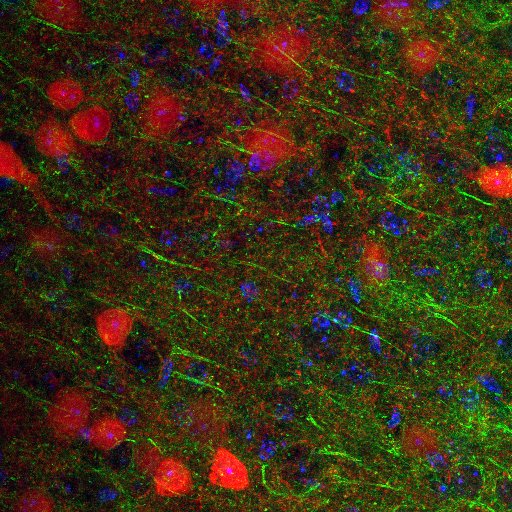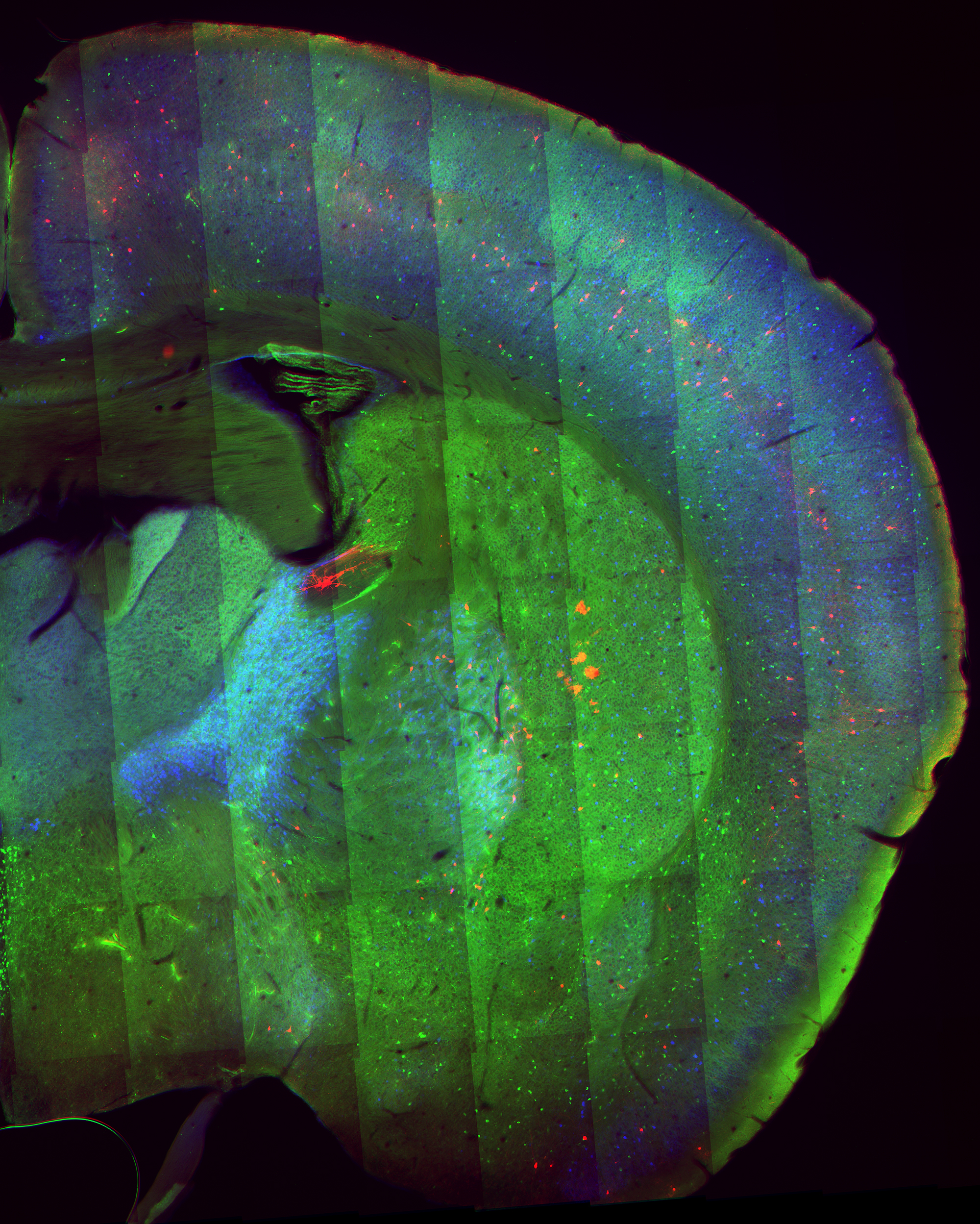Our Research:
We are fascinated by how the developing brain generates and coordinates the multitude of cell types required to form its first simple thought. The Campbell lab develops and uses stem cell and rodent models to study these processes in healthy and diseased states. We use cortical interneurons as a model to study cellular specification because they are exceptionally diverse, critically important for brain function, and implicated in the pathophysiology of neurodevelopmental diseases such as autism.
Starting from a perspective that parsing basic mechanisms will allow better insight into disease, we seek to understand, perturb, and understand again. Building on the incredible progress of developmental biology in understanding transcriptional regulation, we aim to integrate these findings with signaling and co-transcriptional pathways into regulatory networks that guide cellular specification.
Cortical interneurons
Cortical interneurons comprise only a small proportion of the neuronal population of the cortex, though they play essential roles in modulating neuronal circuitry. Cortical interneuron cell types are remarkably diverse; scRNAseq experiments describe as many as 21 and no less than six SOM+ interneuron subtypes in the mature visual cortex alone. We’ve made significant progress in understanding the early specification events that initiate interneuron diversification, but how they give rise to the multitude of mature populations remains a fascinating challenge.
Extrinsic factors guiding interneuron development:
Interneurons segregate, broadly, into two major non-overlapping lineages based on their birthplace in the medial or caudal ganglionic eminences (MGE and CGE). These regions are specified by the coordinated actions of secreted growth factors during early development.
I have previously shown that non-canonical Wnt signaling through the Ryk receptor is important for driving the differentiation of MGE cell types (McKenzie et al., Neuron, 2019). We have developed a new mouse embryonic stem cell system which will allow expansion of these studies to new cell types and cellular processes that were inaccessible in prior experimental designs. With these new tools, and others in the works, we are investigating underlying mechanisms of Wnt and other signaling factors and how they shape cellular specification.
Intrinsic factors guiding interneuron development:
Intriguingly, nascent interneurons are somewhat homogeneous at embryonic stages (by RNAseq). So, what are the molecular mechanisms that drive the interneuron diversity observed in the mature brain? Recent studies characterizing the transcriptomic subtypes of cortical interneuron progenitors have focused on steady-state gene expression levels. These studies overlook co- or post-transcriptional regulation, specifically alternative splicing (AS), which greatly enhance the transcriptome’s ability to impart refined, cell type-specific functions. Indeed, AS is especially prevalent in the brain, and dysfunction in RNA binding proteins (RBPs)--key regulators of AS--have been increasingly linked to neurodevelopmental disorders such as autism. Very recently, multiple studies have found that different interneuron cell types in the adult are characterized by not only distinct transcriptional profiles, but also distinct splicing programs (Feng et al. PNAS 2021). However, neither the temporal evolution of specific splicing profiles nor the contribution of AS dynamics to neuronal specification have been fully explored. Utilizing a combination of stem cell and in vivo techniques, we bridge this important gap.
Autism
Autism and other neurodevelopmental disorders pose incredible challenges for growing numbers of children and their families. The difficulty of untangling the complex mechanistic underpinnings of neurodevelopment has significantly hampered development of autism therapeutics. While identifying the neural basis for autism has been thus far elusive, there is growing evidence that GABAergic interneurons of the cortex are a central component of autism pathophysiology.
Interneurons, Metabolism, and Autism
Fast spiking parvalbumin (PV) basket cells have emerged as an especially vulnerable population in autism. PV cells have an extremely high energetic demand due to their fast-spiking nature, and are thought to be susceptible to metabolic disturbances.
Importantly, there is significant evidence suggesting that energetics and metabolism may be an underlying feature of autism biology.
These converging lines of evidence suggest that studying metabolism in normal and autism model systems of interneuron development is of immense value. Of late, there has been great interest in redox metabolism as a reflection of normal cell signaling and cellular energetics, but very little is known about redox signaling or cellular metabolism during development or as a result of developmental insults including those that are thought to contribute to autism pathology such as severe inflammation, inborn errors of metabolism, or environmental toxins that cause oxidative stress. Making use of a new fluorescent probe with expanded dynamic range developed by our collaborators, we will leverage the power of human iPSCs to describe the redox and metabolic time course of normal neuronal development and in autism models.


